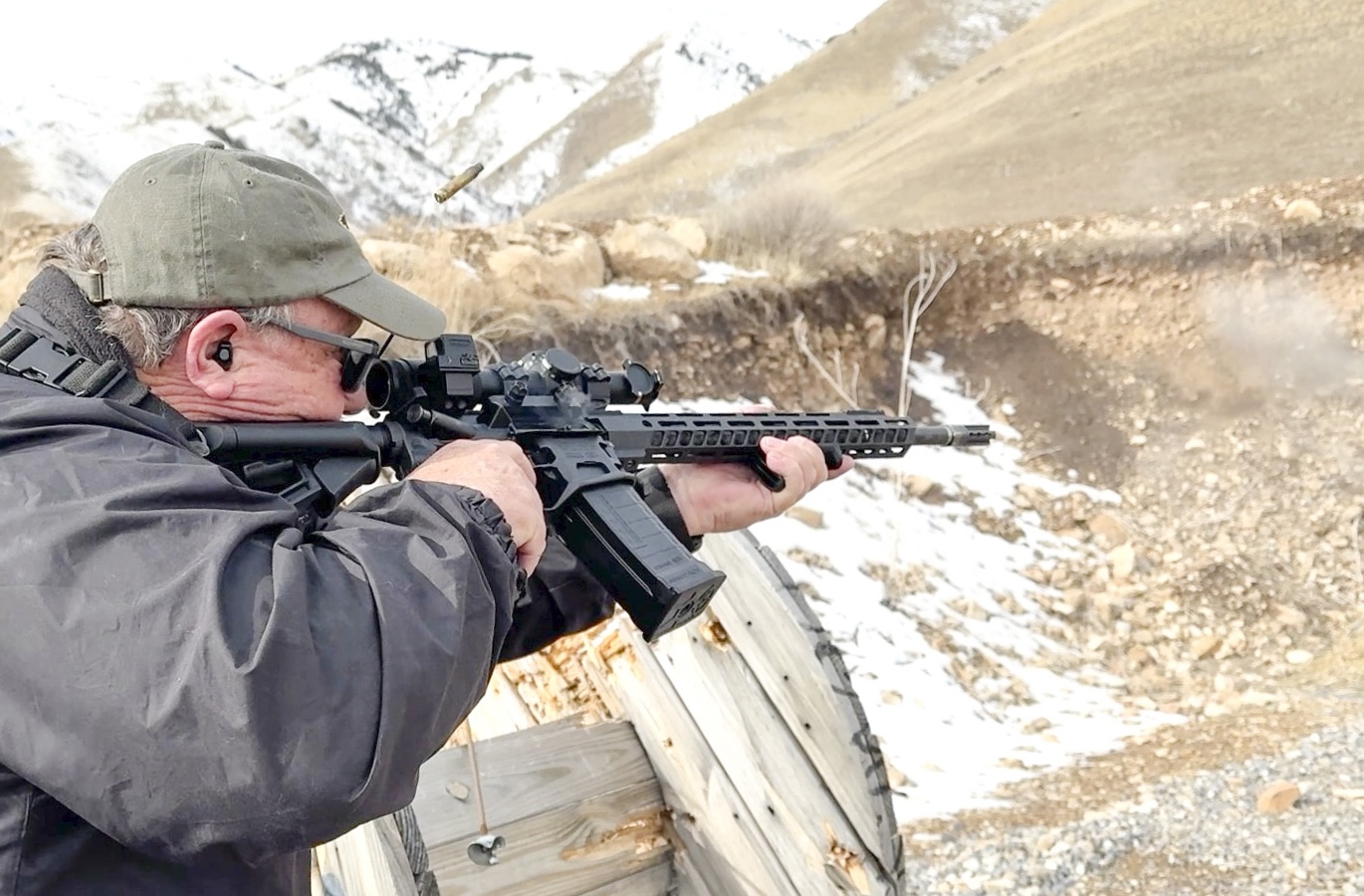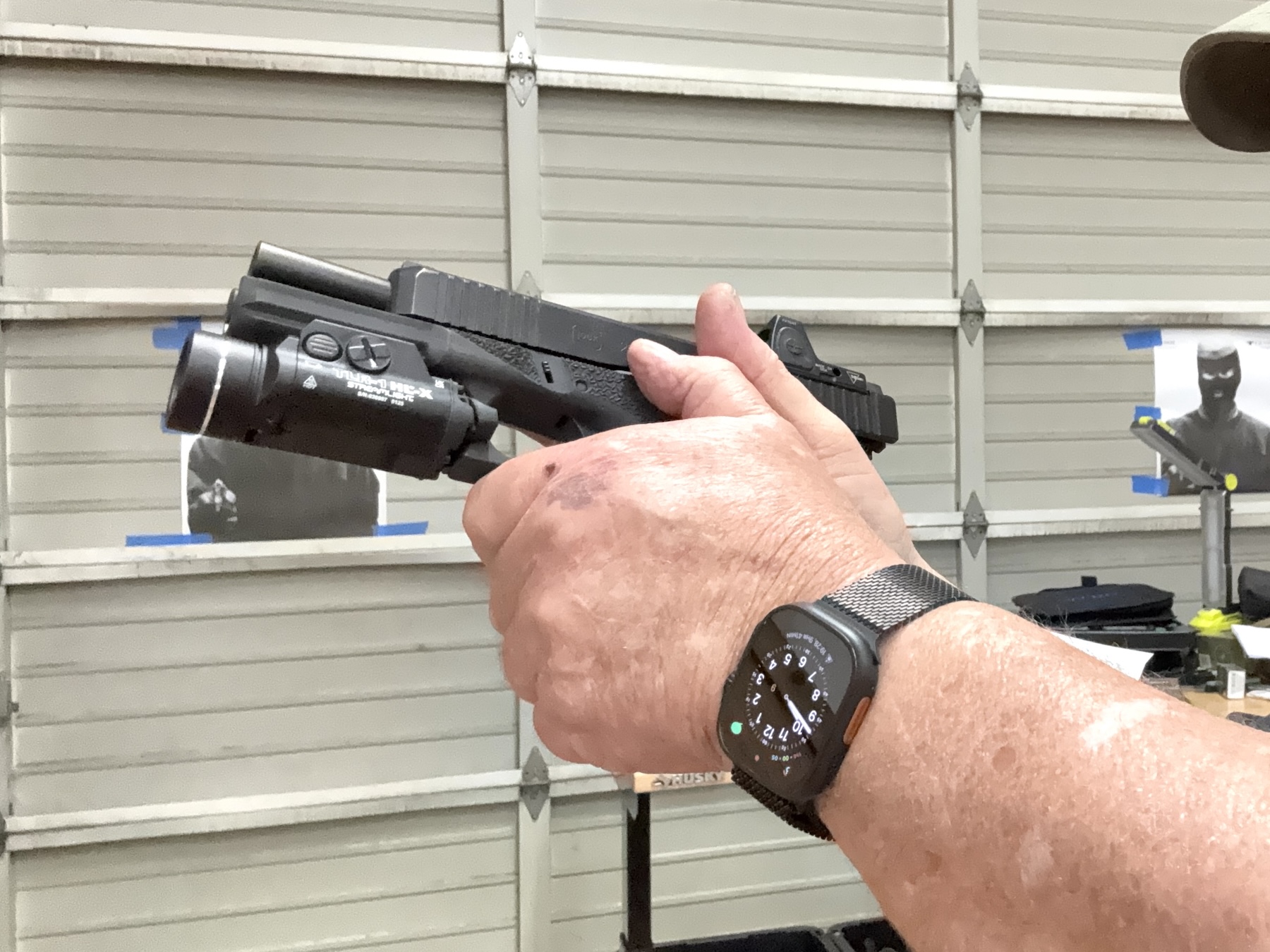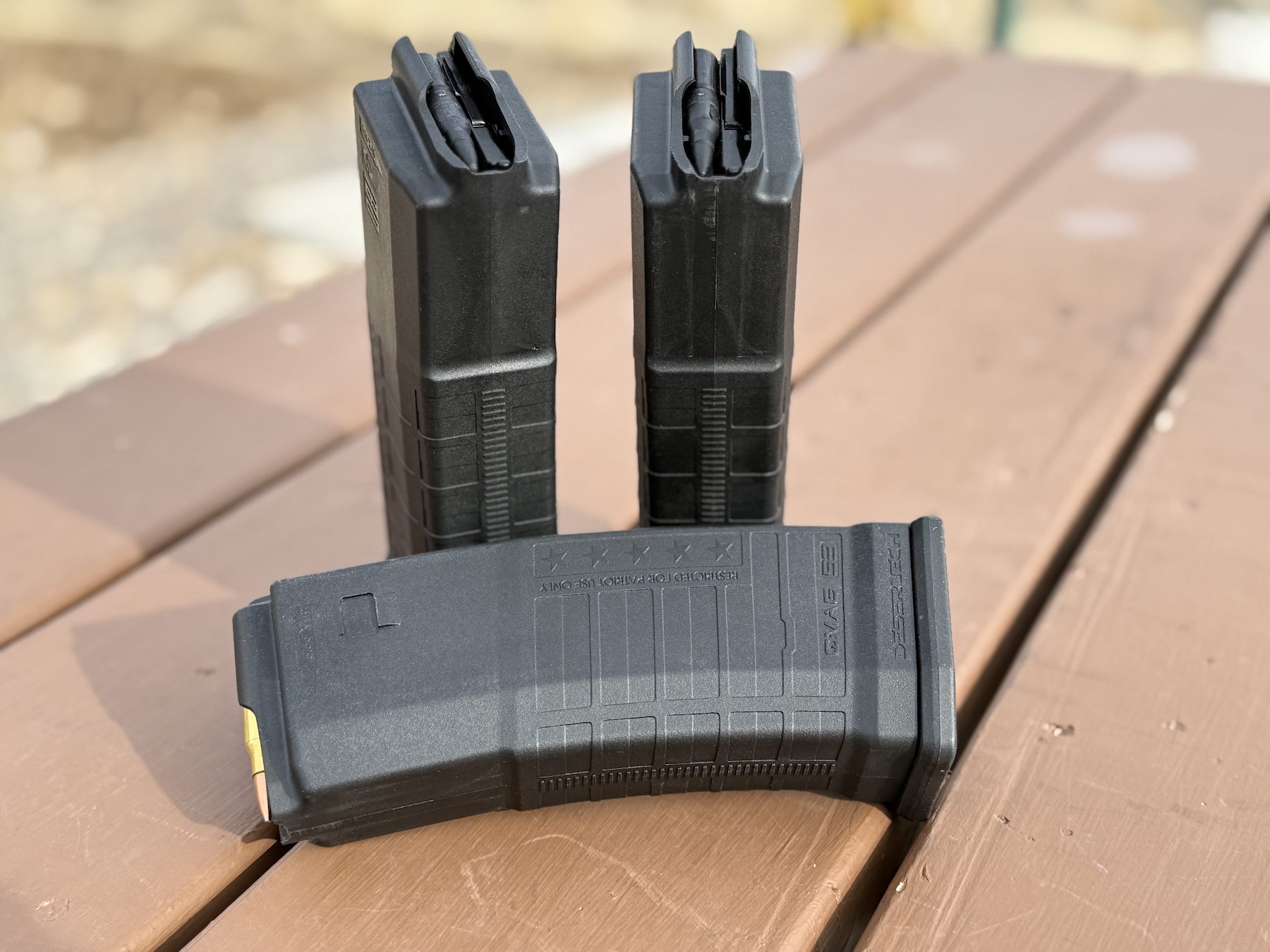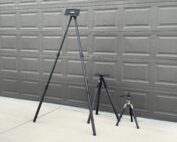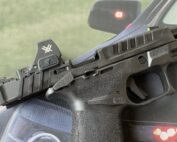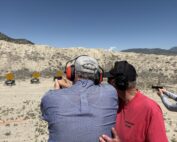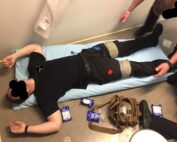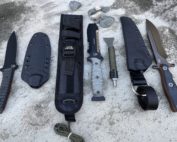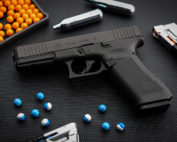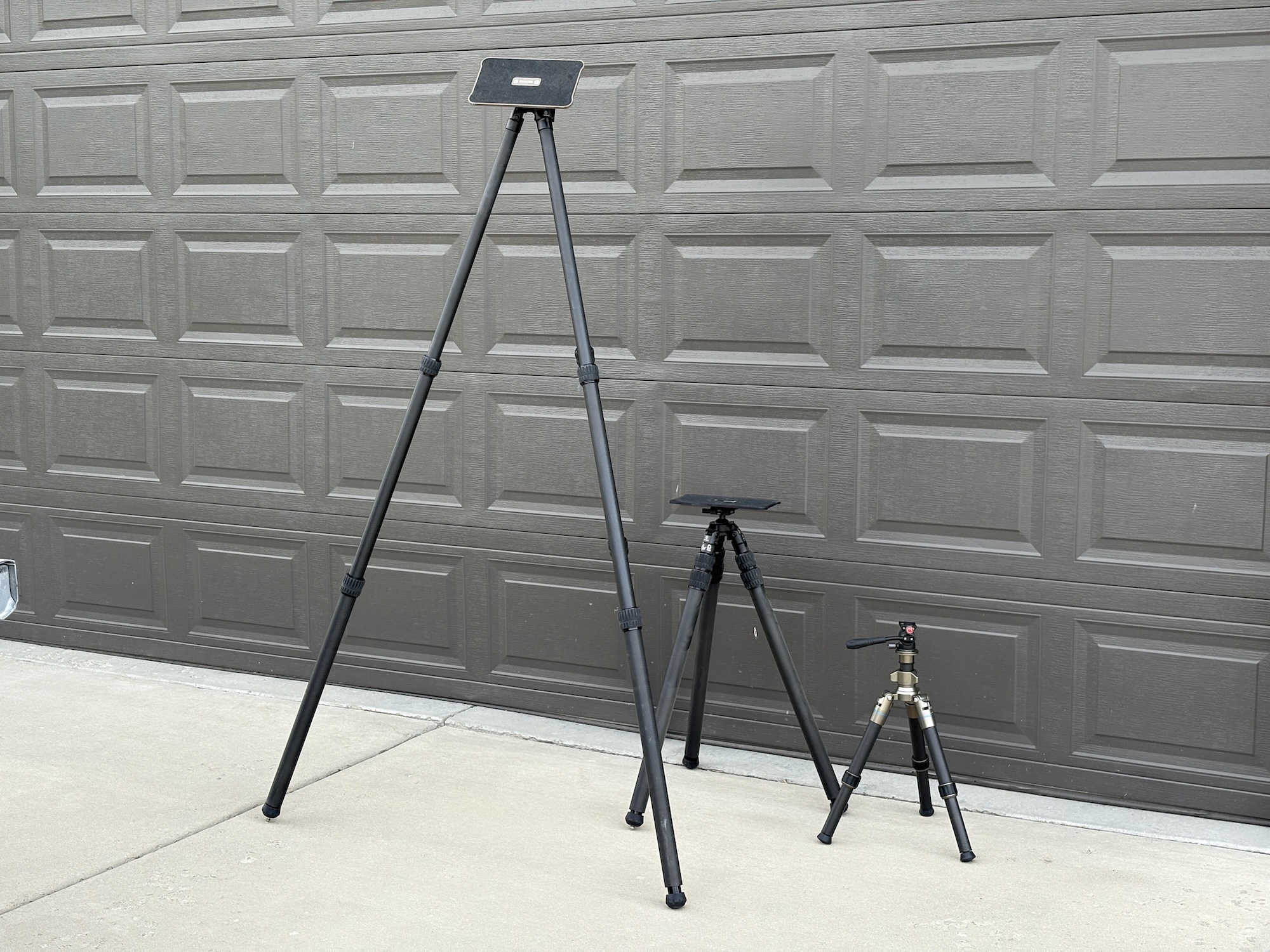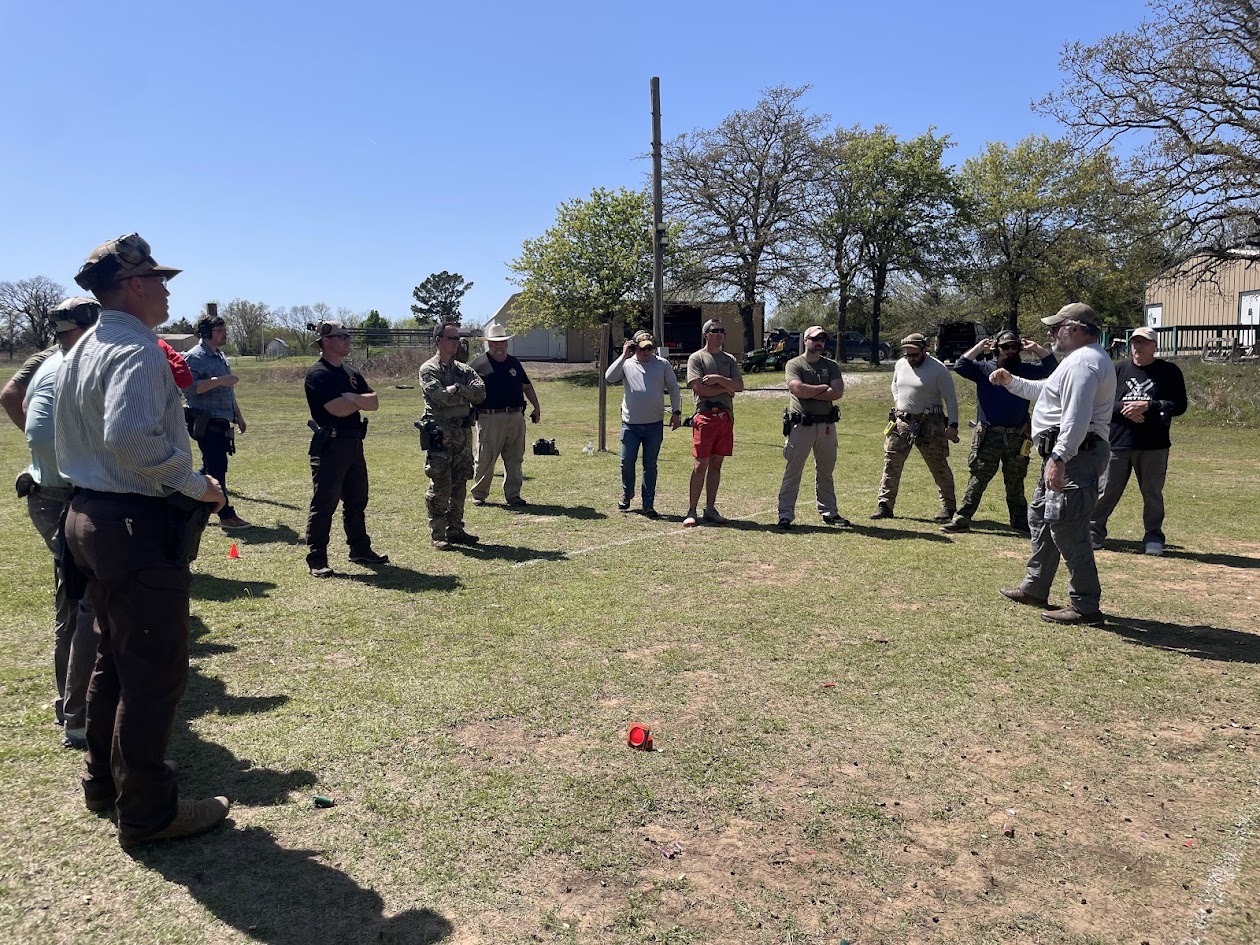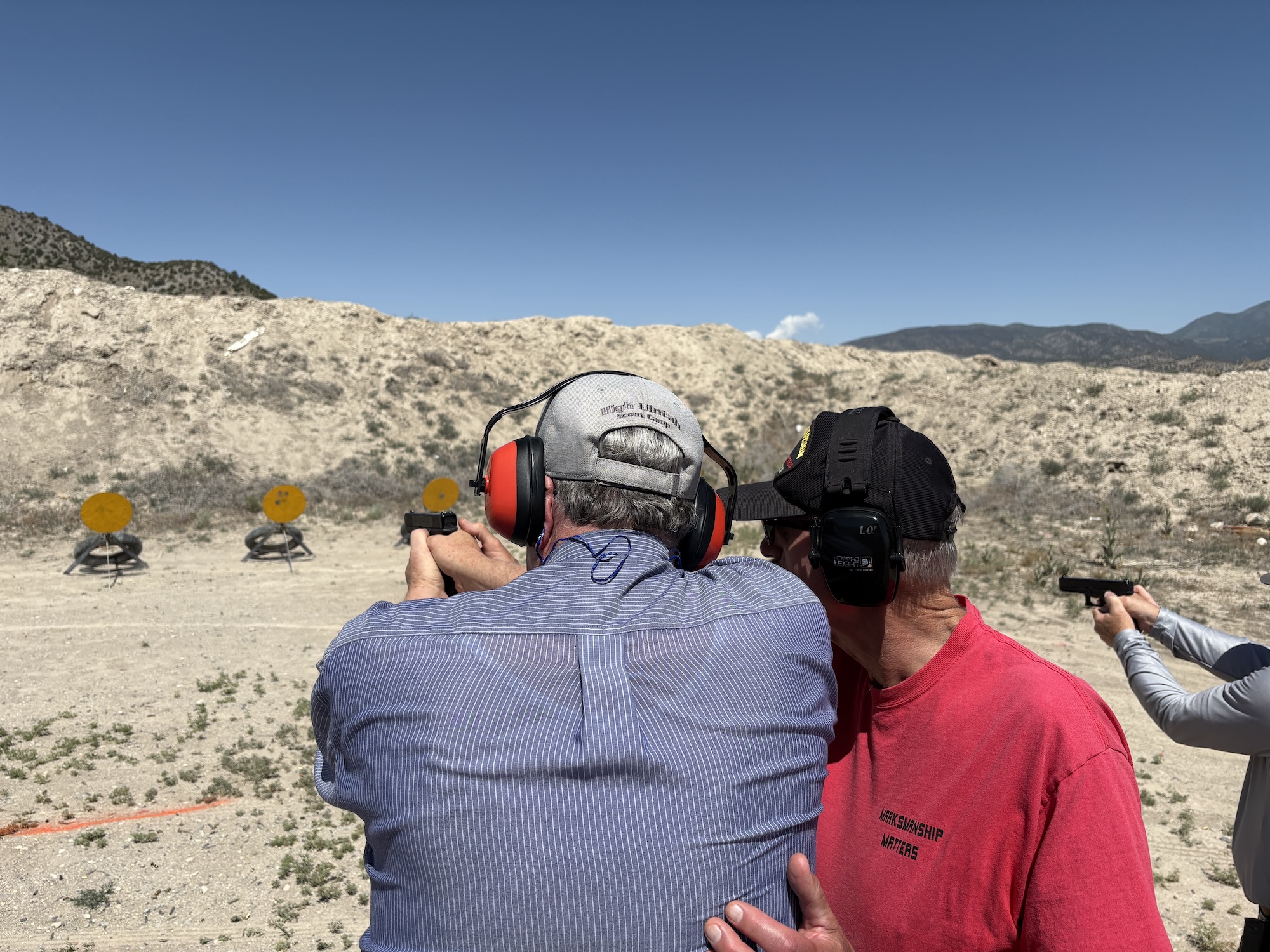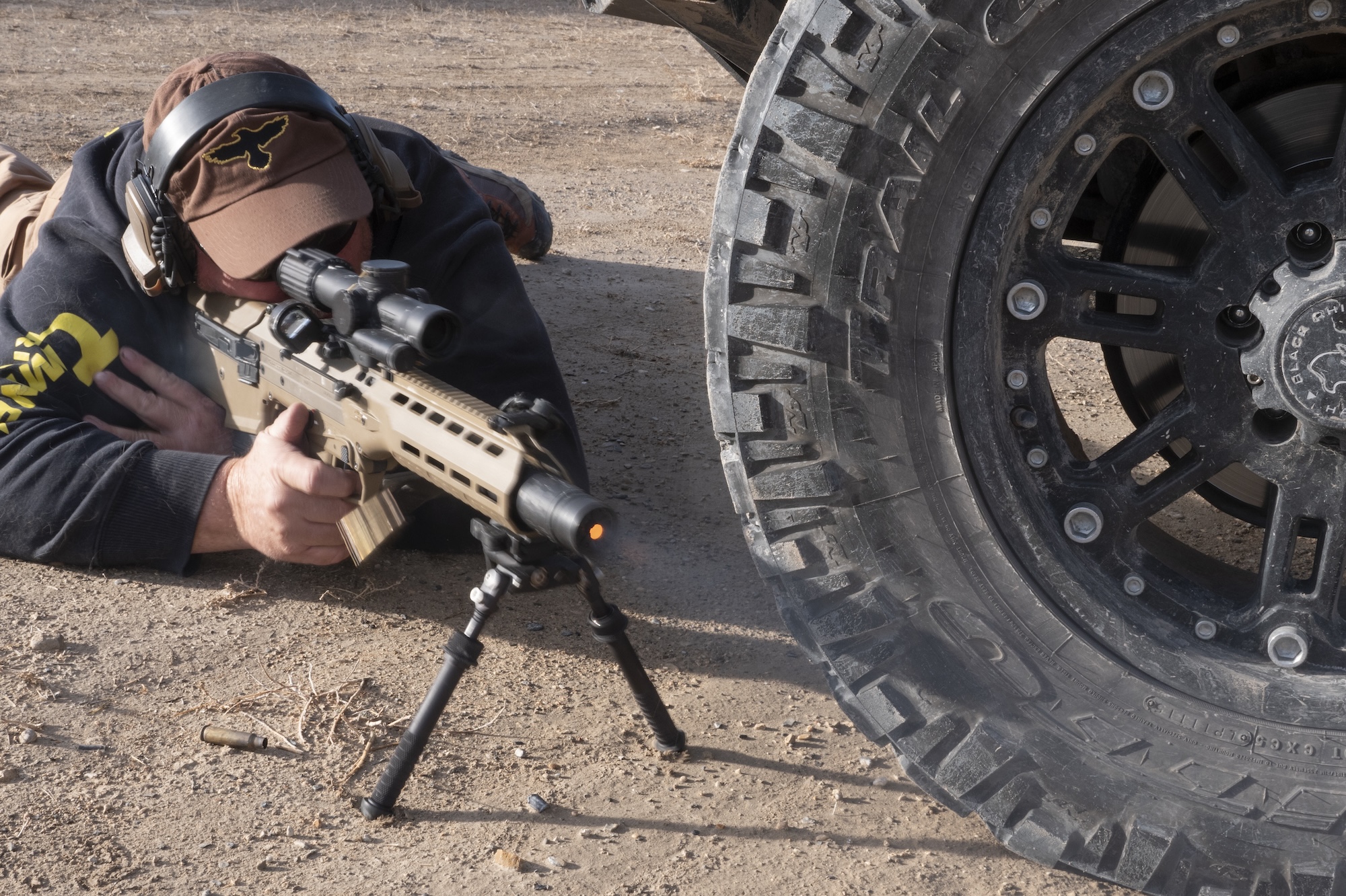
feature-Making one handed swaps from prone can take you off the gun and take lots of practice
One of the most common questions I get is about the difference between training for law enforcement and competition. Trainers and “experts” often cause confusion and uncertainty for many. Years ago, I developed the “certainty principle.” I’m not sure where or who it came from, so I probably stole it. It is the determining factor in the techniques I teach. The central idea is that what you do must increase the certainty the technique will work on the first attempt. Speed is a consideration, but you must weigh it against how well it will accomplish the task under real-world conditions the first time. That speed is often the primary factor for winning matches.
Failure may drop you a spot or two or cost you the match, but you come back the next time. During a shooting, that failure has deadly consequences, necessitating the certainty of a technique. Something that takes a fraction of a second longer but increases the likelihood it will work makes it more suitable for defensive/duty use. This applies to almost anything, but three common issues are manipulating the trigger and slide plus a reload with retention (tac loads).
Trigger Reset
The initial transition to striker-fired weapons popularized the concept of “catching the link.” The idea was that you would only release the trigger far enough to reset the trigger or “catch the link.” It worked unless you failed to reset the trigger (short stroking on a revolver).
Failing to reset the trigger, preventing the pistol from firing, is not good in a fight. If your pistol doesn’t fire, the immediate response is to clear the stoppage. Done correctly, that takes time. On occasion, it has created an actual stoppage that requires even more time to clear. The bottom line is that a simple failure to reset could turn into a nightmare.
Reset did not really catch on with competitive shooters who already knew it was a problem. With fractions of a second determining the difference between a top-10 finish and an also-ran, it was quickly abandoned for what most call “taking up the slack.” Release the trigger enough to ensure it resets, then press through the slack and the wall. While a bit slower, it made sure you would not short-stroke or fail to reset. Most top competitors actually release and then slap the trigger, making certain they won’t fail to reset. Since they train top-tier military units, their methods have become the norm. That said, knowing where the reset is on your firearm is still important. Drills showing students how reset feels, looks, or sounds have benefits. The problem is not going far enough to pass the reset. Make certain you and your shooters are resetting the trigger instead of catching some imaginary link.
Overhand or Slide Stop Release?
For most of my life, I’ve used a 1911. Releasing the slide for a reload meant pushing the slide stop down. Pulling the slide was never an issue for me until Glocks came along. Their initial armorers’ training very clearly stated their slide stop was not a release and taught you to roll over the top of the slide before pulling it rearward and releasing it. Though not new, it was not the norm at the time. After decades of use and training, my preference is pulling the slide to the rear.

The overhand method makes it far more certain a round will chamber, and it works on all modern pistols.
If done properly, it is more certain to work on the first try, especially for pistols with narrow slide stops. Unlike a 1911 or my Legacy Sig, it’s easy to miss them and to try again. Pulling the slide rearward increases the likelihood it will load on the first try. It’s also easier to do with gloves on or when the slide is covered in stuff. Perfect? Nope, but for decades, it has been the most certain method of releasing the slide on nearly all pistols.
The Infamous Tactical Load
This section might ruffle a few feathers. While I practice and teach them, they are not something I do much. Whether you do them or not is your call. When I do them, it’s not per doctrine. What is more certain – manipulating two magazines in one hand? Or removing one and replacing it while pocketing the old magazine? For me, this is a reload with retention on a loaded gun. The opportunity to do so safely with enough time is a requirement. While they occur in real life, they are rare. It is easier with single-stack pistols. When seven rounds was high capacity it was important, not so much with 15+ round magazines.
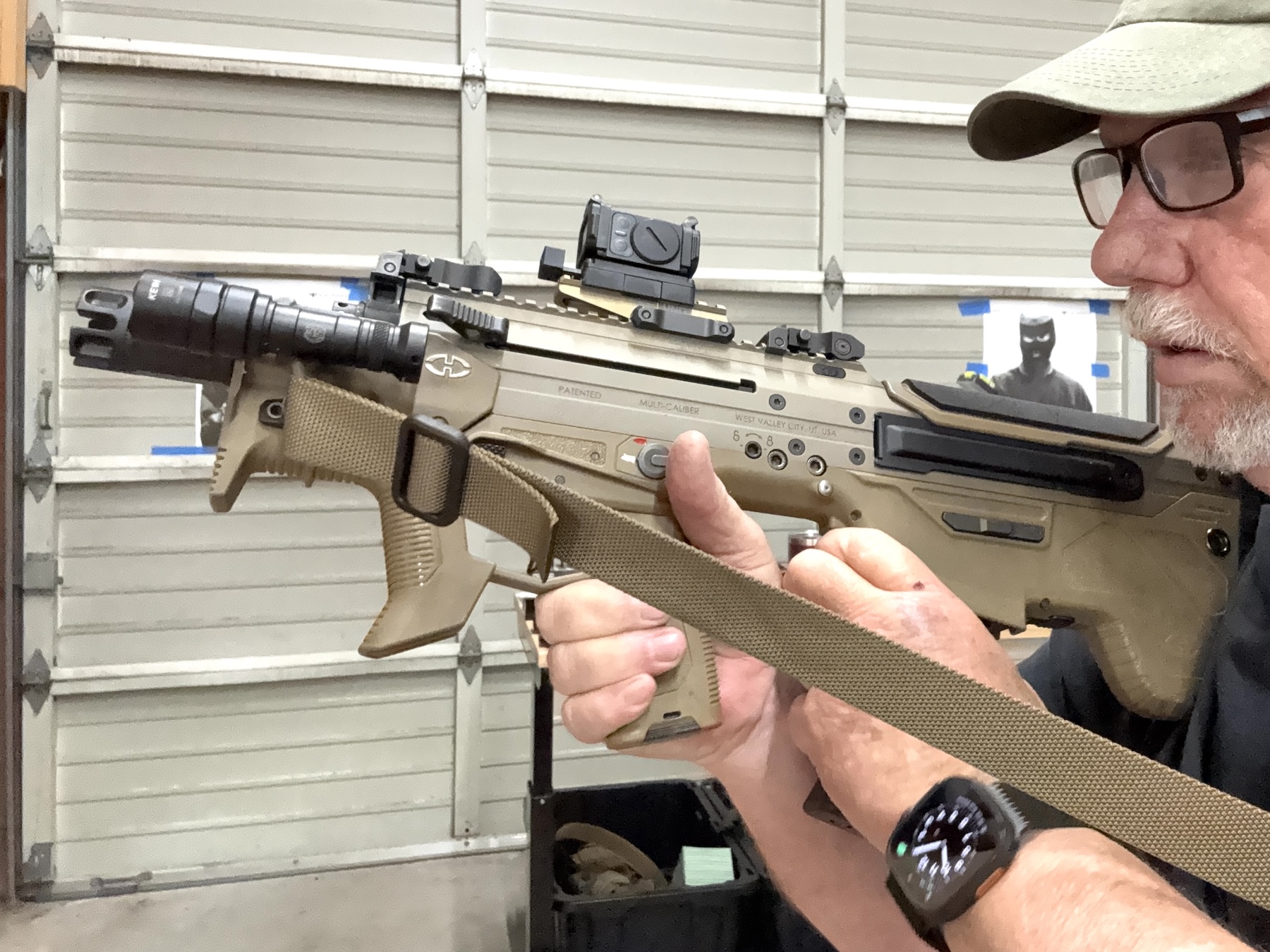
Conducting a reload with retention and securing the first magazine makes it less likely you will drop one or both magazines.
Rifles are worse. I have seen too many people drop both magazines and then have to grab another, or worse, scramble to pick them up since they have no more. Doing so with bigger, wider magazines is about impossible. The same applies to AKs or other “rock and lock” designs. It’s challenging enough on a square range, but being prone in the dirt, mud, snow, or behind cover is worse. Why take the risk? Remove the magazine from the gun and stow it, insert a new magazine, and move on. This is more likely to work on the first attempt in a fight.
Bottom Line
When practicing the defensive use of your firearm, focus on techniques most likely to work the first time. A match and practice are great places to try and experiment with new things. However, at work, you should use proven techniques with the greatest likelihood of success. Time may be “infinite,” but not in a fight with no do-overs.
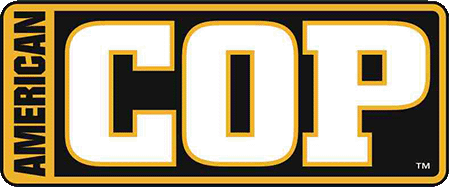

 (+3 rating, 3 votes)
(+3 rating, 3 votes)
